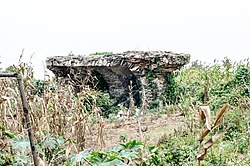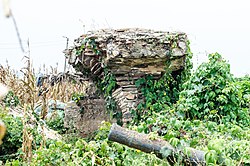| Fort Fredensborg | |
|---|---|
| Part of Danish Gold Coast | |
 Fort Fredensborg | |
 Ruins of Fort Fredensborg | |
| Location | |
| Coordinates | 5°44′40.7″N0°11′0.0″E / 5.744639°N 0.183333°E |
| Site history | |
| Built | 1734 |
| Garrison information | |
| Occupants | Denmark (1734-1835) England (1850) |
Fort Fredensborg is situated along the Gulf of Guinea, in the Greater Accra Region in Old Ningo and was built in 1734. [1] Because of its testimony to the Atlantic slave trade and the European colonial influence on West Africa, the fort was inscribed on the UNESCO World Heritage List in 1979, along with several castles and forts in Ghana. [2]

